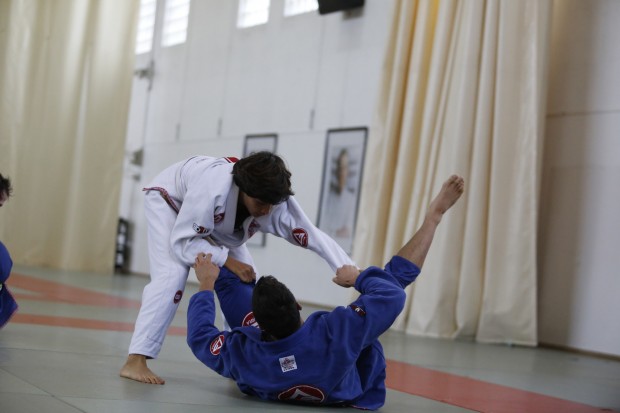3 Tips For Better Guard
What makes the guard so dangerous for some bjj players? These fighters specialize in different guards and are every bit as dangerous off of their back as they are on top. How do they develop a guard that is so strong and more importantly – how do you improve your own guard?
Here are 3 tips on developing your guard that I have been shared with me by different GB black belts:
see also: 6 Guard Technique Videos from Gracie Barra
1) Don’t hang onto failed submissions
If you attack with a triangle choke but your opponent has managed to create a strong posture, your triangle is unlikely to be successful. Persisting and hanging on to a weak triangle will actually help your opponent throw your legs aside and pass your guard.
This is a significant problem with white belt students. In their enthusiasm to catch the submission, they attempt to desperately hang onto a submission when they really don’t have it.
The better strategy is to recognize when you don’t really have the triangle and let it go and recover to a defensive guard position to regroup and start again.

2) Have an active guard
A black belt with one of the most difficult guards to deal with gave me the simple advice : “Don’t just lay back and see what your opponent is going to do! Attack!”.
Sometimes on the bottom we will defend our guard and pause, watching what our opponent will try to do.
I will tell you what they will do: get the grips that they want and start to pass your guard!
Instead, when you are playing guard, take the initiative and attack with a sweep or submission to put your opponent on the defensive.
If your opponent is desperately trying to avoid your submission or keep their balance to avoid being swept… the are NOT trying to pass your guard!
They must stop their own offence and deal with what you are trying to do.
Remember: whoever is defending is the one behind in the fight!
3) The right tool for the right job
Since the guard passer is on top, they have the advantages of:
A) Being able to apply their weight and pressure
B) The movement and speed advantage
Depending if the opponent is trying to pass on their knees with a pressure style pass or if they are standing and passing with speed to the outside, you must change your own strategy to deal with the new problem.
Example : If the opponent stands in strong posture, your closed guard is not longer as effective and your legs will quickly fatigue.
You should change to a different, open guard that better prevents your opponent’s pass.
For this reason, you can not rely on a single guard style and need to learn and train multiple and complimentary guard styles.
Example 2:If you like butterfly guard, you also need to learn Xguard and 1 leg Xguard as the 2 styles complement and transition well to each other.

on Gracie Barra : 5 Techniques From The Butterfly Guard
Don’t get stuck on a certain guard when the opponent has moved out of that preferred range – you have to adapt and change to a more suitable guard strategy.
* Tip: If you want to improve your guard, positional training might be the best tool. Start your rolls in which ever guard position that you are working on and look at the training as experimentation as to what works for you and learn from your mistakes.
on Gracie Barra : Take Note! 3 Methods to Remember Your Techniques
Credits: Mark Mullen
Gracie Barra Black belt based in Saigon, Vietnam
Twitter: @MarkMullenBJJ
